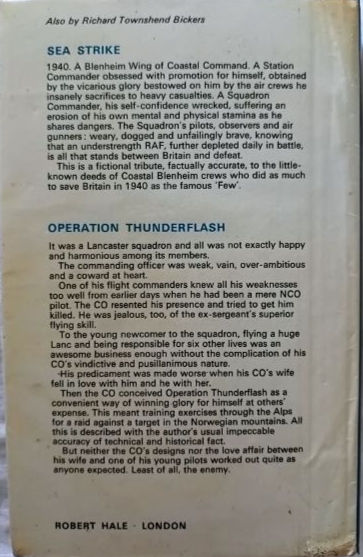Equal To The Task Vol. 1 The Royal Australian Army Service Corps (1992) By Neville Lindsay
The history of the Royal Australian Army Service Corps began in Australia in 1886 when Victoria raised an Ordinance and the Commissariat and Transport Corps of Victoria was formed. This Corps was made up of militia and continued until 1889 when the ordnance functions of the corps were dropped and it was redesignated as the Commissariat and Transport Corps of Victoria. New South Wales (NSW) followed suit and on 01 January 1891 the Commissariat and Transport Corps of NSW was formed. The Army Service Corps was formed in England in 1888 and in NSW on 23 November 1893. Shortly after Victoria followed and late in 1895 retitled their corps to the Victorian Army Service Corps.
The AASC saw service in WW1 at Gallipoli, in Europe with the British Expeditionary Force, Egypt and with the ANZAC Divisions in France. In all areas men of the MSC provided an invaluable service to the fighting troops and the Corps was well commended for its efforts. Out of a total of 331,781 men of the AIF who embarked in Australia for overseas, 9,735 were AASC personnel.
Members of a horse transport unit of the Australian Army Service Corps and their teams at an Army depot on the Salisbury Plain.
A total of three officers and 38 other ranks were killed in action, four officers and 57 other ranks died of wounds and a further 16 officers and 593 other ranks were wounded in action, 34 were gassed.
During this interwar period the AASC (MSC) did not rate particularly high in military minds and consequently was reduced to a few militia units. The regular compliment of these units consisted mainly of small cadres of regular quartermasters and warrant officers of the Australian Instructional Corps.
In 1933 a decision was made to mechanise the MSC and by 1938 the Corps was equipped with Chevrolets, 30cwt for second (formation) line work and 3 ton for third (force) line work. The total MSC Motor Transport vehicles in 1939 were approximately 100. Prior to World War Two the MSC was prepared neither in numbers nor equipment for wartime tasks and was largely untrained in almost every aspect of its specialist functions.
Units possessed few vehicles and most of these were outdated and unsuitable, equipment was at a premium. There were no depots for supplies, only inadequate drill halls and makeshift buildings. Furthermore, there were no specialist units to bake bread, butcher and distribute meat, hold supplies in cold storage, receive and distribute petroleum, oils and lubricants. Marine food supply platoons, workshops and laboratories had yet to be raised, agricultural farms and petroleum storage farms were units of the future, as were air maintenance and amphibious companies (air supply and the use of amphibians had not been envisaged at this stage). Not only were none of these units raised on the Australian Order of Battle but there were no specialists on strength to man them if they had been. Finally, to top it all off, there was a serious deficiency in trained AASC officers. This was the state of the AASC when, on 3rd September 1939, England declared war on Germany and WWII commenced.
During World War 2, the AASC (MSC) saw service on all fronts. The best remembered is the role played by the Corps in supporting the 9th Australian Division in the defence of Tobruk. It was there that General Morsehead ordered the MSC to form an infantry battalion thereby authorising its soldiers to draw bayonets. The MSC could not provide a mortar company and subsequently provided four MSC companies, which were utilised as infantry. One of these companies served on the eastern edge of the defence perimeter for six months without relief thereby giving them the distinction of gaining the longest, continuous period of service on front line duty in the Siege of Tobruk. Later these same troops distinguished themselves in the Battle of El Alamein (1942) where, performing their normal corps role, they sustained the 9th Australian Division throughout that momentous operation.
At the end of the war, MSC units formed an integral part of the British Commonwealth Occupation Forces in Japan (1946 - 1955). On 31st December 1948 the Corps was honoured with the Sovereigns bestowal of the prefix Royal thereby altering the name of the AASC (MSC) to that of the Royal Australian Army Service Corps.
Many regular soldiers of the corps served in Korea 1950-1954) and the Malayan Emergency (1955 - 1957). The corps provided two Company Headquarters, three transport Platoons, two supply platoons, one petroleum platoon, a detachment from 176 Air Despatch Company, along with administration units that included 1 Comm Z Postal, AFV Cash Offices and support to HQ AFV, HQ 1 ALSG and HQ 1 ATF during the Australian commitment to South Vietnam (1965 - 1972). for details
On the 31st May 1973 the Corps ceased to exist and the responsibilities of road, transport, air dispatch and postal functions were handed over to the Royal Australian Corps of Transport (RACT) who were formed on the 1st June 1973. The responsibilities of the provision of foodstuffs and POL (petrol oil lubricants) was handed over to the Royal Australian Army Ordnance Corps (RAAOC). Includes awards and roll of honour.
- Hard Cover with Dust Jacket
- 511 pages
- In Fair to Good Condition
































